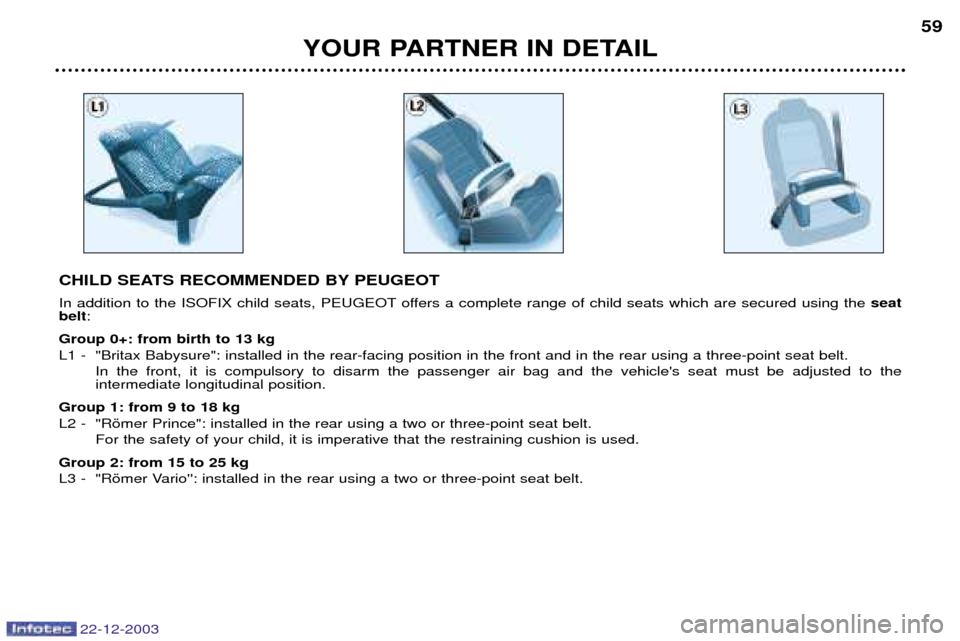Page 57 of 128

YOUR PARTNER IN DETAIL57
22-12-2003
Rules for transporting children on the front passenger seat** Children under the age of 10 must not travel in the forwards facingposition, unless the rear seats arealready occupied by other childrenor the rear seats cannot be used(absent or folded). In this case,adjust the front passenger seat tothe intermediate position and leavethe passenger air bag armed. The transportation of children in the rearwards facing position is permit-ted. In this position, it is essential todisarm the passenger air bag.Otherwise, the child would risk beingkilled or seriously injured if the airbag were to inflate.GENERAL POINTS RELATING TO CHILD SEATS Although one of PEUGEOT's main criteria when designing your vehicle, the safety of your children also depends on you.
For maximum safety, please follow these precautions:
- Since 1992,
all children under the age of 10 must travel in approved child
seats* suited to their weight , on seats fitted with a seat belt.
- A child weighing less than 9 kg must travel in the rearwards facing
position both in the front and in the rear. PEUGEOT recommends thatchildren should travel in the "rearwards facing" position up to the age oftwo.
- Statistically, the safest seats in your vehicle for the transportation of children are the rear seats. PEUGEOT recommends that children travel inthe rear even when a "rearwards facing" child seat is used.
- If a child is travelling on a booster seat, check that the lap section of the seat belt passes over the child's thighs correctly. The chest section of the seat beltmust be positioned on the child's shoulder without touching the neck.
PEUGEOT recommends that you use a booster seat with a back, fitted with aseat belt guide at shoulder level.
- Remember to fasten the seat belt or the child seat harness keeping the slack
in relation to the child's body to a minimum , even for short journeys.
* According to current legislation in the country.
** Consult the relevant administration in your country for information regarding the rules for transporting children on the front passenger seat.
Page 58 of 128
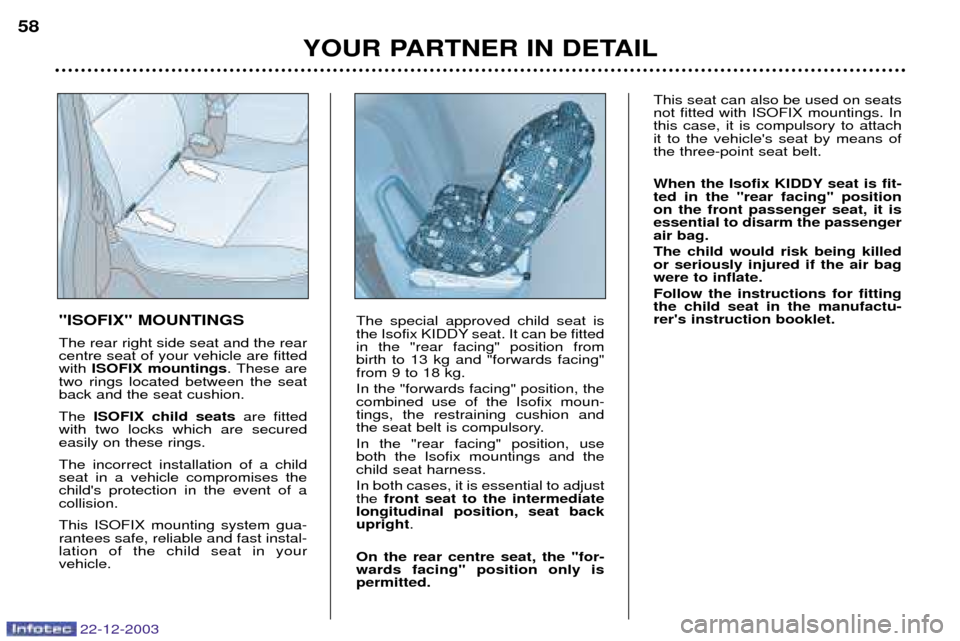
22-12-2003
YOUR PARTNER IN DETAIL
58
"ISOFIX" MOUNTINGS The rear right side seat and the rear centre seat of your vehicle are fittedwith ISOFIX mountings . These are
two rings located between the seatback and the seat cushion. The ISOFIX child seats are fitted
with two locks which are secured easily on these rings. The incorrect installation of a child seat in a vehicle compromises thechild's protection in the event of acollision. This ISOFIX mounting system gua- rantees safe, reliable and fast instal-lation of the child seat in yourvehicle. The special approved child seat is
the Isofix KIDDY seat. It can be fittedin the "rear facing" position frombirth to 13 kg and "forwards facing"from 9 to 18 kg. In the "forwards facing" position, the combined use of the Isofix moun-tings, the restraining cushion and
the seat belt is compulsory. In the "rear facing" position, use both the Isofix mountings and thechild seat harness. In both cases, it is essential to adjust the
front seat to the intermediate
longitudinal position, seat backupright .
On the rear centre seat, the "for-wards facing" position only ispermitted. This seat can also be used on seatsnot fitted with ISOFIX mountings. Inthis case, it is compulsory to attachit to the vehicle's seat by means ofthe three-point seat belt.
When the Isofix KIDDY seat is fit- ted in the "rear facing" positionon the front passenger seat, it isessential to disarm the passengerair bag. The child would risk being killed or seriously injured if the air bagwere to inflate. Follow the instructions for fitting the child seat in the manufactu-rer's instruction booklet.
Page 59 of 128
22-12-2003
YOUR PARTNER IN DETAIL59
CHILD SEATS RECOMMENDED BY PEUGEOT
In addition to the ISOFIX child seats, PEUGEOT offers a complete range of child seats which are secured using the seat
belt :
Group 0+: from birth to 13 kg
L1 - "Britax Babysure": installed in the rear-facing position in the front and in the rear using a three-point seat belt. In the front, it is compulsory to disarm the passenger air bag and the vehicle's seat must be adjusted to the intermediate longitudinal position.
Group 1: from 9 to 18 kg
L2 - "Ršmer Prince": installed in the rear using a two or three-point seat belt. For the safety of your child, it is imperative that the restraining cushion is used.
Group 2: from 15 to 25 kg
L3 - "Ršmer Vario'': installed in the rear using a two or three-point seat belt.
Page 60 of 128
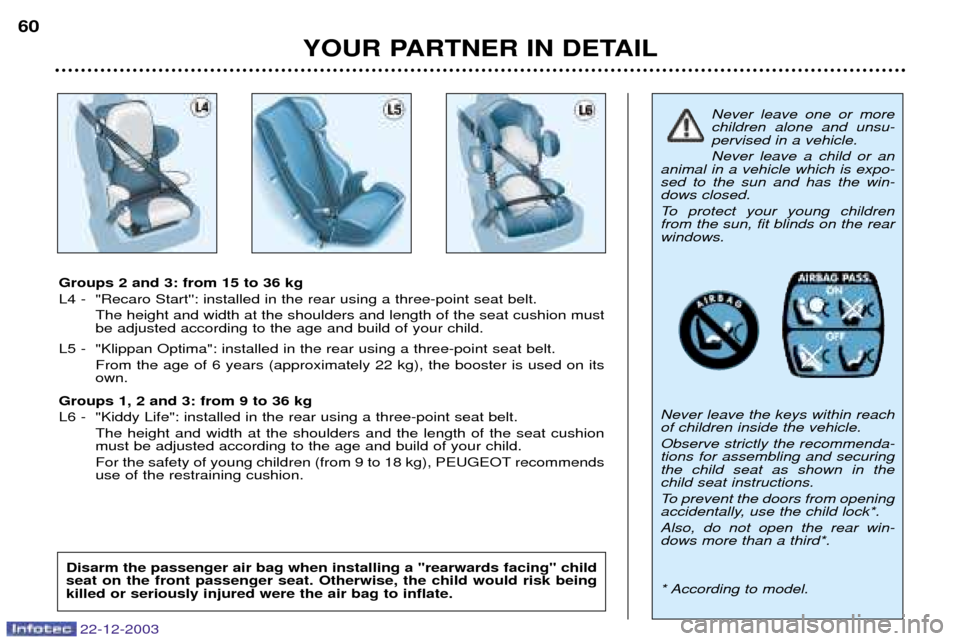
22-12-2003
YOUR PARTNER IN DETAIL
60
Never leave one or more children alone and unsu-pervised in a vehicle. Never leave a child or an
animal in a vehicle which is expo- sed to the sun and has the win-dows closed.
To protect your young children from the sun, fit blinds on the rearwindows. Never leave the keys within reach of children inside the vehicle. Observe strictly the recommenda- tions for assembling and securingthe child seat as shown in thechild seat instructions.
To prevent the doors from opening
accidentally, use the child lock*. Also, do not open the rear win- dows more than a third*.
* According to model.
Groups 2 and 3: from 15 to 36 kg
L4 - "Recaro Start'': installed in the rear using a three-point seat belt.
The height and width at the shoulders and length of the seat cushion must be adjusted according to the age and build of your child.
L5 - "Klippan Optima": installed in the rear using a three-point seat belt. From the age of 6 years (approximately 22 kg), the booster is used on itsown.
Groups 1, 2 and 3: from 9 to 36 kg
L6 - "Kiddy Life": installed in the rear using a three-point seat belt. The height and width at the shoulders and the length of the seat cushion must be adjusted according to the age and build of your child.
For the safety of young children (from 9 to 18 kg), PEUGEOT recommends use of the restraining cushion.
Disarm the passenger air bag when installing a "rearwards facing" child seat on the front passenger seat. Otherwise, the child would risk beingkilled or seriously injured were the air bag to inflate.
Page 61 of 128
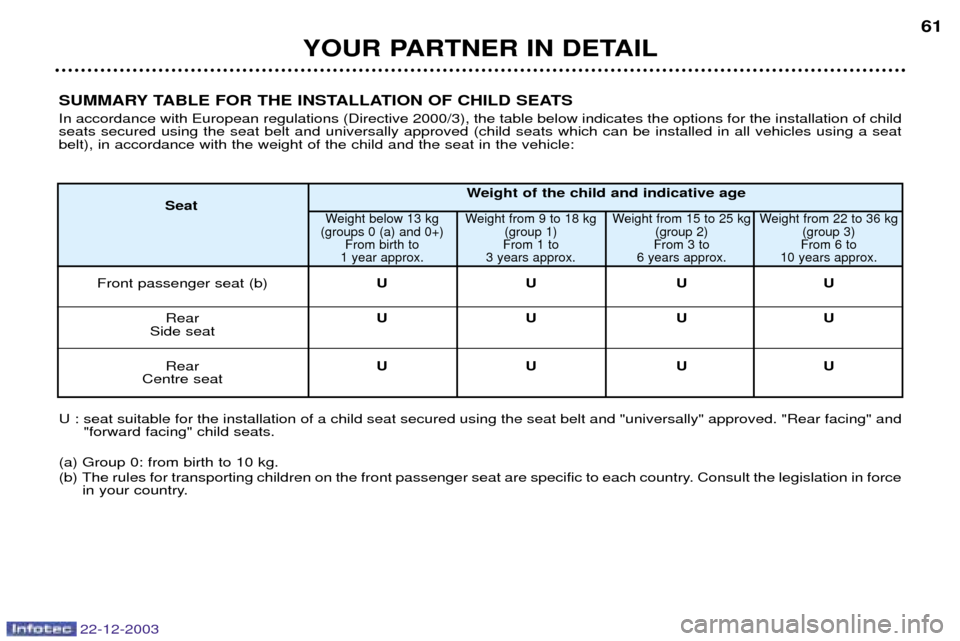
22-12-2003
YOUR PARTNER IN DETAIL61
U : seat suitable for the installation of a child seat secured using the seat belt and "universally" approved. "Rear facing" an d
"forward facing" child seats.
(a) Group 0: from birth to 10 kg.
(b) The rules for transporting children on the front passenger seat are specific to each country. Consult the legislation in fo rce
in your country.
SUMMARY TABLE FOR THE INSTALLATION OF CHILD SEATS In accordance with European regulations (Directive 2000/3), the table below indicates the options for the installation of child seats secured using the seat belt and universally approved (child seats which can be installed in all vehicles using a seatbelt), in accordance with the weight of the child and the seat in the vehicle:
Weight of the child and indicative age
Seat
Weight below 13 kg Weight from 9 to 18 kg Weight from 15 to 25 kg Weight from 22 to 36 kg
(groups 0 (a) and 0+) (group 1) (group 2) (group 3) From birth to From 1 to From 3 to From 6 to
1 year approx. 3 years approx. 6 years approx. 10 years approx.
Front passenger seat (b) UU UU
Rear UU UU
Side seat
Rear UU UU
Centre seat
Page 62 of 128
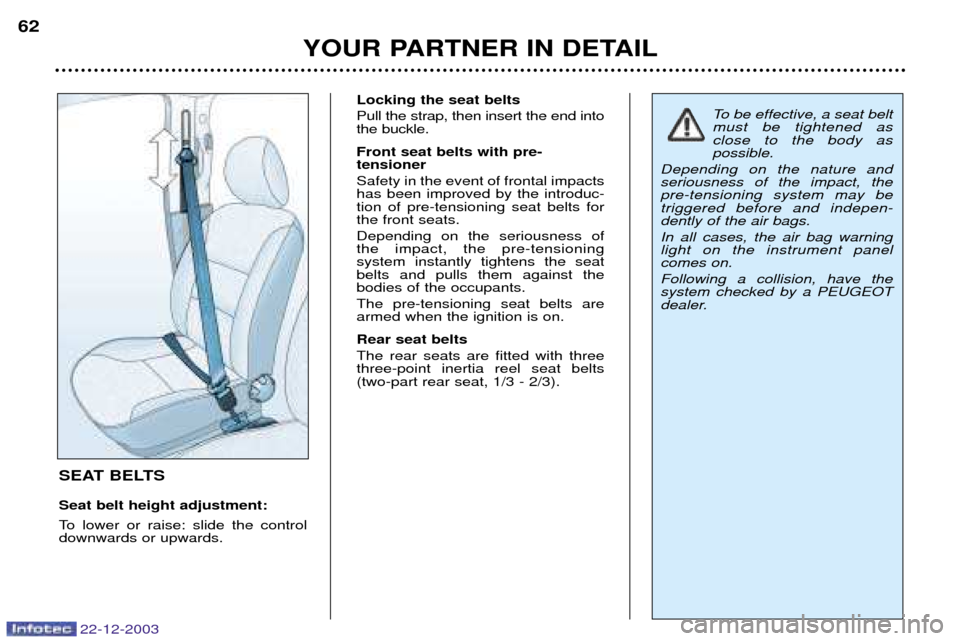
22-12-2003
YOUR PARTNER IN DETAIL
62
SEAT BELTS Seat belt height adjustment:
To lower or raise: slide the control downwards or upwards. Locking the seat belts Pull the strap, then insert the end into the buckle. Front seat belts with pre- tensioner Safety in the event of frontal impacts has been improved by the introduc-tion of pre-tensioning seat belts forthe front seats. Depending on the seriousness of the impact, the pre-tensioning system instantly tightens the seatbelts and pulls them against thebodies of the occupants. The pre-tensioning seat belts are armed when the ignition is on. Rear seat belts The rear seats are fitted with three three-point inertia reel seat belts(two-part rear seat, 1/3 - 2/3).
To be effective, a seat belt must be tightened asclose to the body as possible.
Depending on the nature andseriousness of the impact, thepre-tensioning system may betriggered before and indepen-dently of the air bags. In all cases, the air bag warning light on the instrument panelcomes on. Following a collision, have the system checked by a PEUGEOT
dealer.
Page 63 of 128
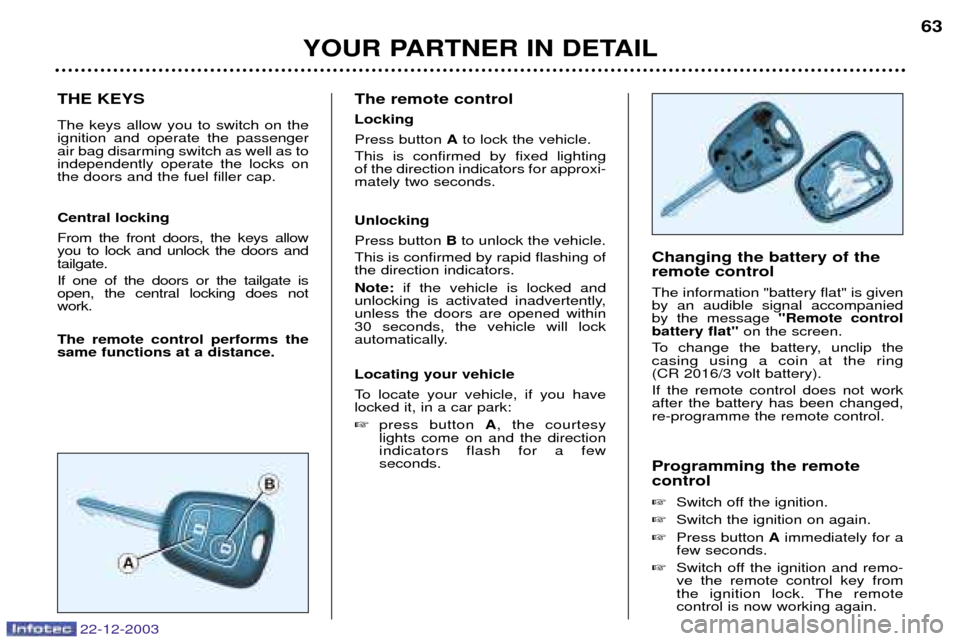
YOUR PARTNER IN DETAIL63
THE KEYS The keys allow you to switch on the ignition and operate the passengerair bag disarming switch as well as toindependently operate the locks onthe doors and the fuel filler cap. Central locking From the front doors, the keys allow you to lock and unlock the doors andtailgate. If one of the doors or the tailgate is open, the central locking does notwork. The remote control performs the same functions at a distance.The remote control Locking Press button
Ato lock the vehicle.
This is confirmed by fixed lighting of the direction indicators for approxi-mately two seconds. Unlocking Press button Bto unlock the vehicle.
This is confirmed by rapid flashing of the direction indicators. Note: if the vehicle is locked and
unlocking is activated inadvertently, unless the doors are opened within30 seconds, the vehicle will lock
automatically. Locating your vehicle
To locate your vehicle, if you have locked it, in a car park: � press button A, the courtesy
lights come on and the direction indicators flash for a fewseconds.
Changing the battery of the remote control The information "battery flat" is given by an audible signal accompanied by the message "Remote control
battery flat" on the screen.
To change the battery, unclip thecasing using a coin at the ring (CR 2016/3 volt battery). If the remote control does not work after the battery has been changed,re-programme the remote control. Programming the remote control � Switch off the ignition.
� Switch the ignition on again.
� Press button Aimmediately for a
few seconds.
� Switch off the ignition and remo- ve the remote control key from
the ignition lock. The remotecontrol is now working again.
22-12-2003
Page 64 of 128
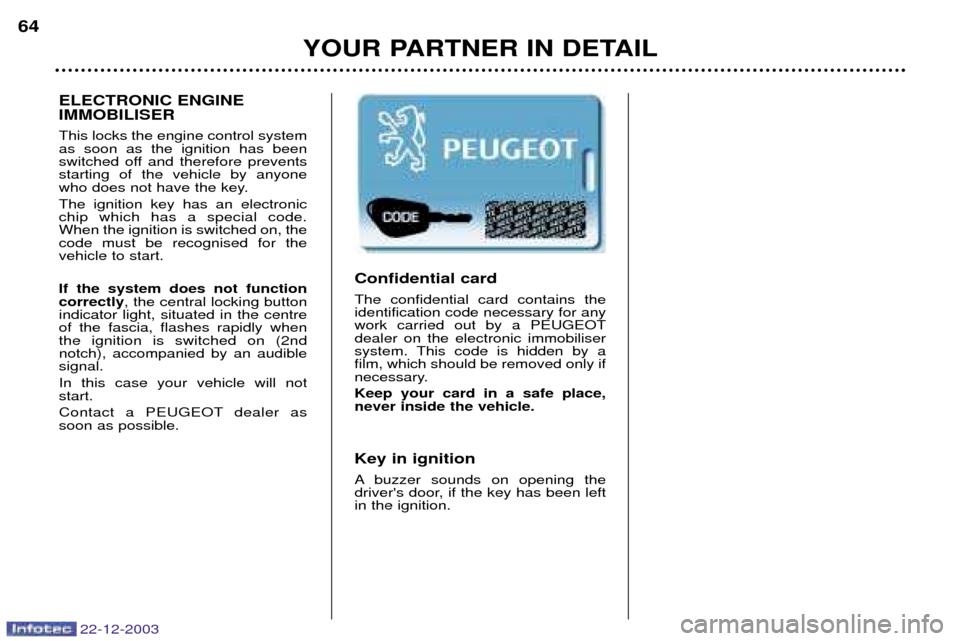
YOUR PARTNER IN DETAIL
64
Confidential card The confidential card contains the identification code necessary for anywork carried out by a PEUGEOTdealer on the electronic immobiliser
system. This code is hidden by afilm, which should be removed only if
necessary. Keep your card in a safe place, never inside the vehicle. Key in ignition
A buzzer sounds on opening the
driver's door, if the key has been leftin the ignition.
ELECTRONIC ENGINE IMMOBILISER This locks the engine control system as soon as the ignition has been
switched off and therefore preventsstarting of the vehicle by anyone
who does not have the key. The ignition key has an electronic chip which has a special code.When the ignition is switched on, thecode must be recognised for thevehicle to start. If the system does not function correctly
, the central locking button
indicator light, situated in the centreof the fascia, flashes rapidly whenthe ignition is switched on (2ndnotch), accompanied by an audiblesignal. In this case your vehicle will not start.
Contact a PEUGEOT dealer as soon as possible.
22-12-2003
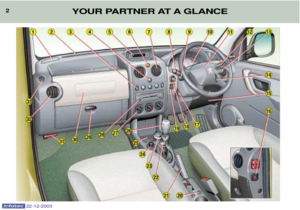 1
1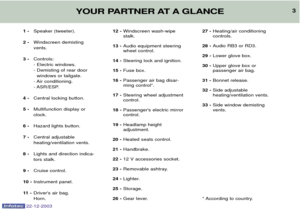 2
2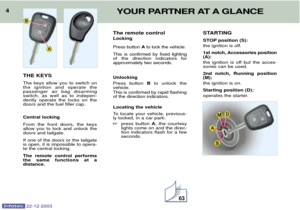 3
3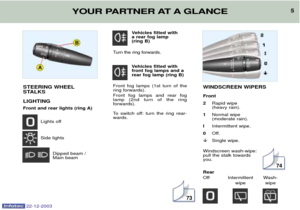 4
4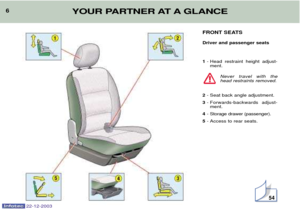 5
5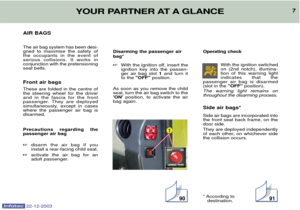 6
6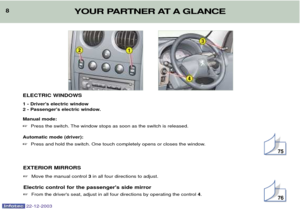 7
7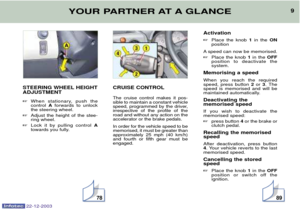 8
8 9
9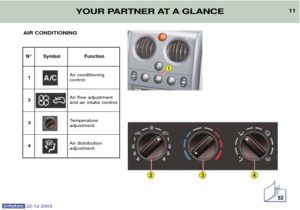 10
10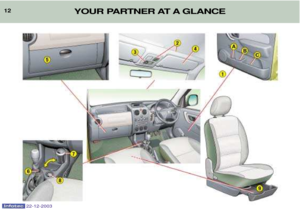 11
11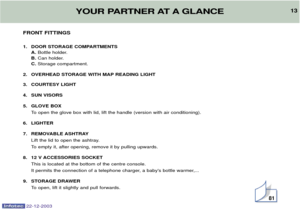 12
12 13
13 14
14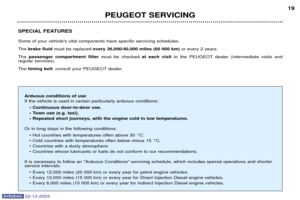 15
15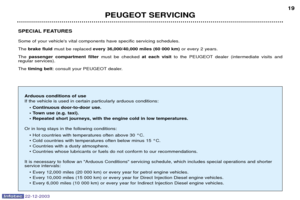 16
16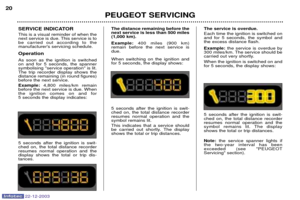 17
17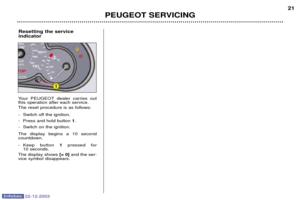 18
18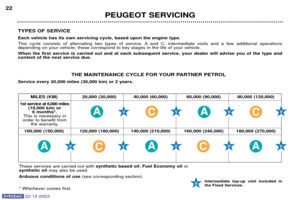 19
19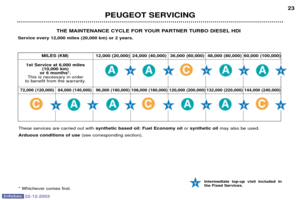 20
20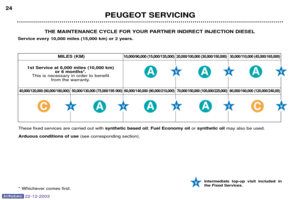 21
21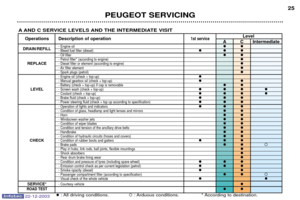 22
22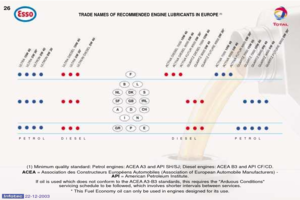 23
23 24
24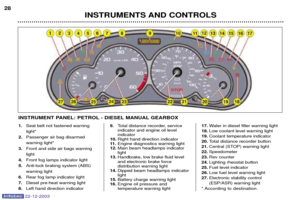 25
25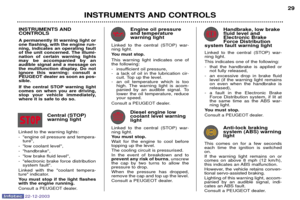 26
26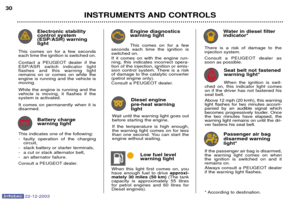 27
27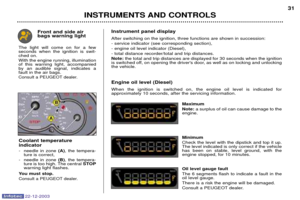 28
28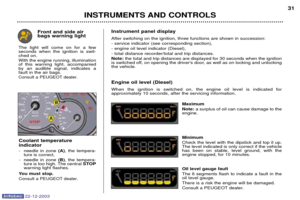 29
29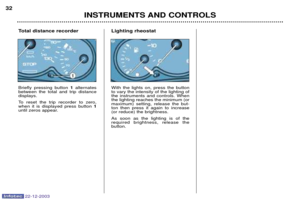 30
30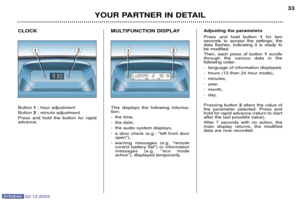 31
31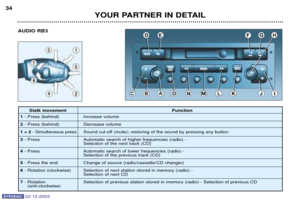 32
32 33
33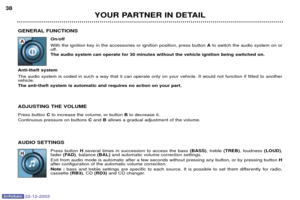 34
34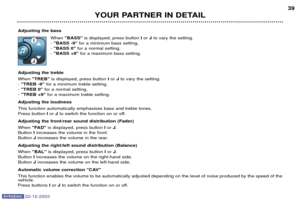 35
35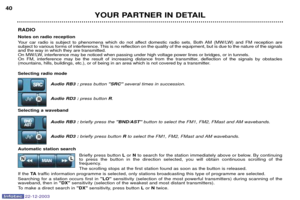 36
36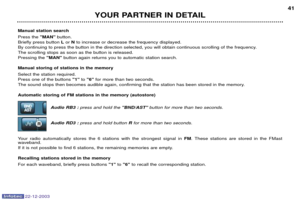 37
37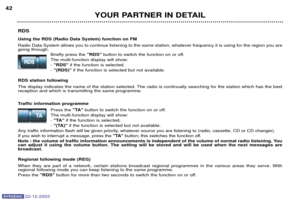 38
38 39
39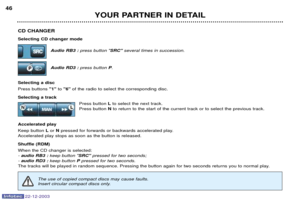 40
40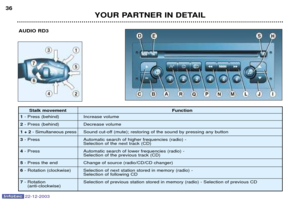 41
41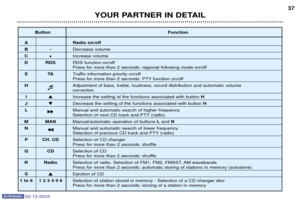 42
42 43
43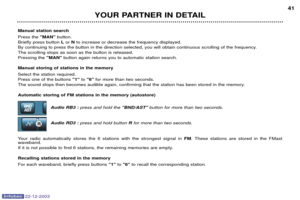 44
44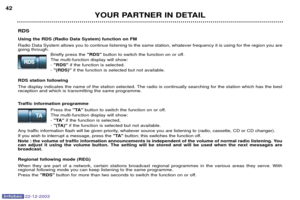 45
45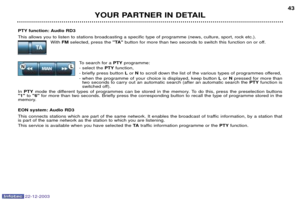 46
46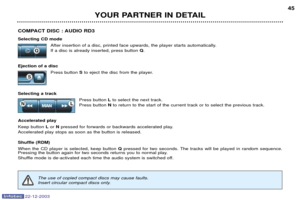 47
47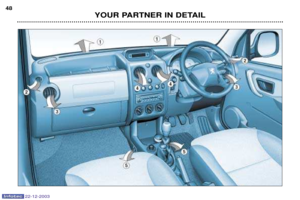 48
48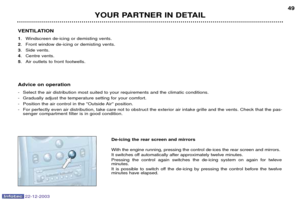 49
49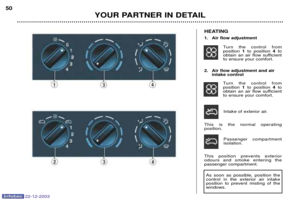 50
50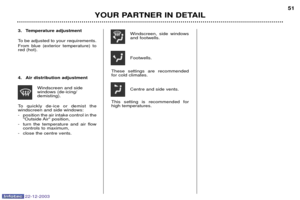 51
51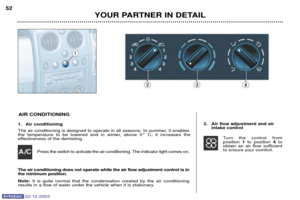 52
52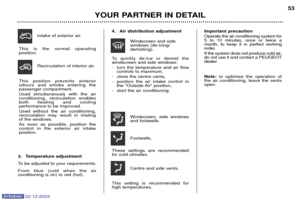 53
53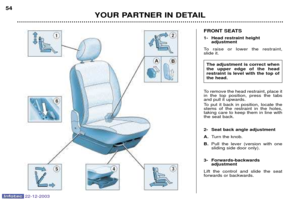 54
54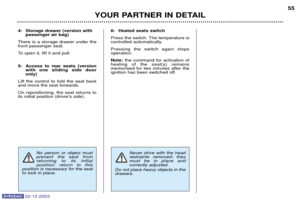 55
55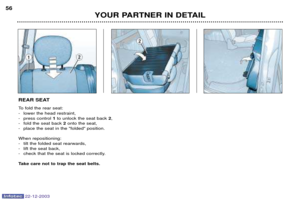 56
56 57
57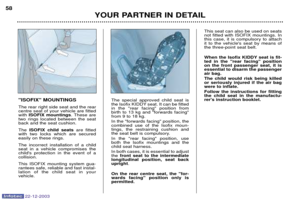 58
58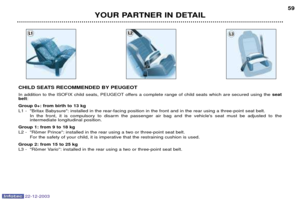 59
59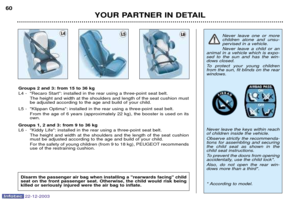 60
60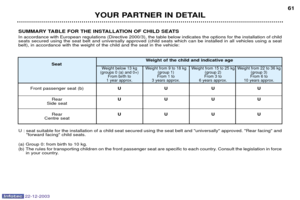 61
61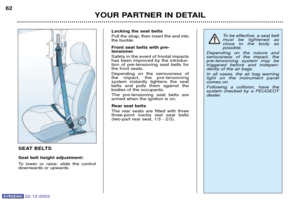 62
62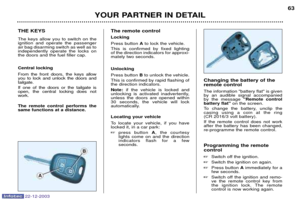 63
63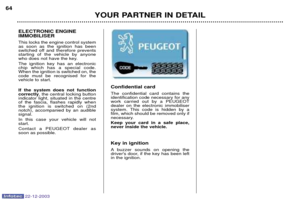 64
64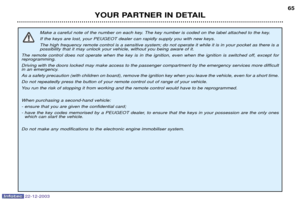 65
65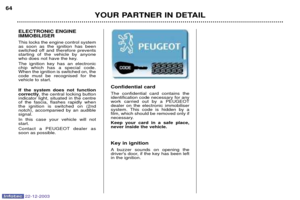 66
66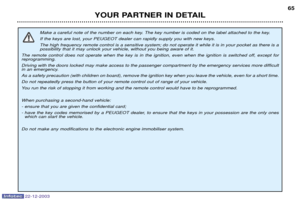 67
67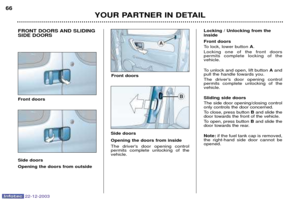 68
68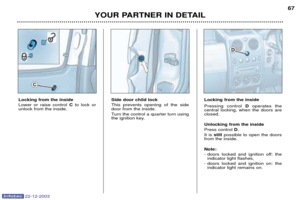 69
69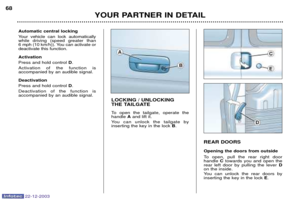 70
70 71
71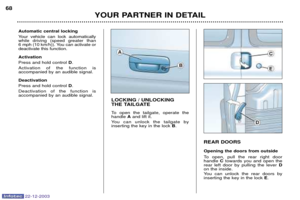 72
72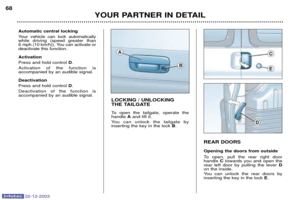 73
73 74
74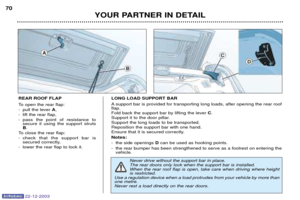 75
75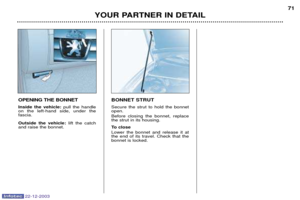 76
76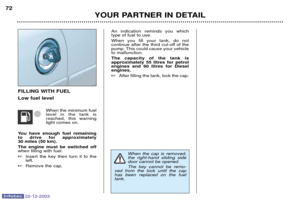 77
77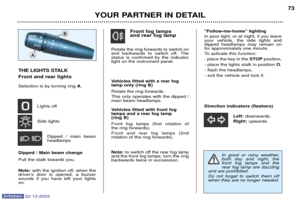 78
78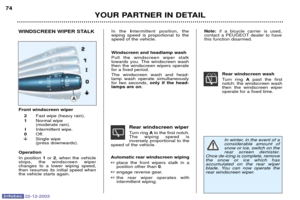 79
79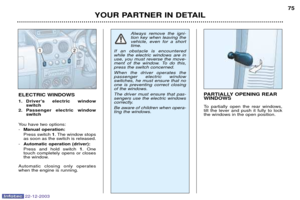 80
80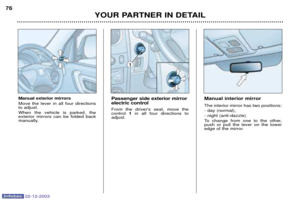 81
81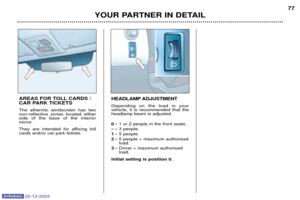 82
82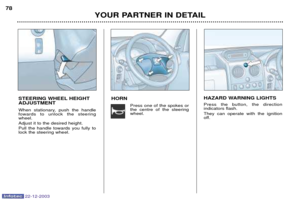 83
83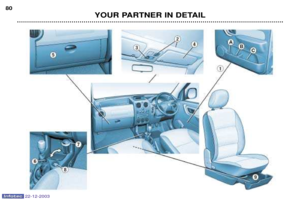 84
84 85
85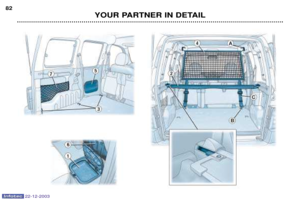 86
86 87
87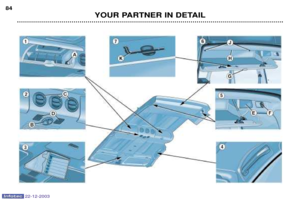 88
88 89
89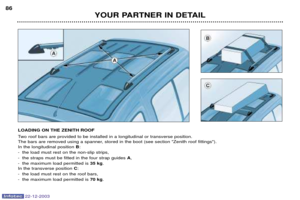 90
90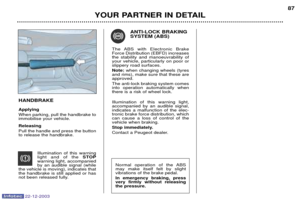 91
91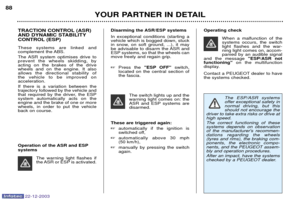 92
92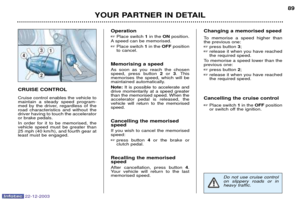 93
93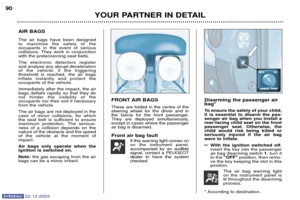 94
94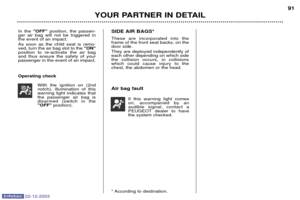 95
95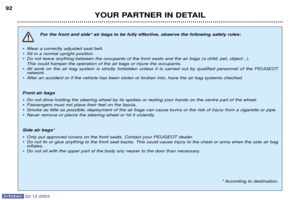 96
96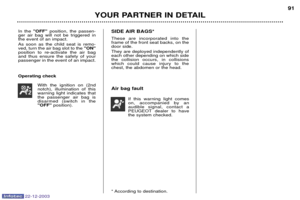 97
97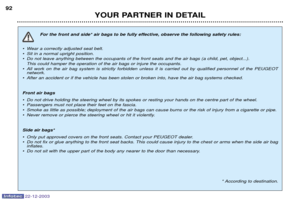 98
98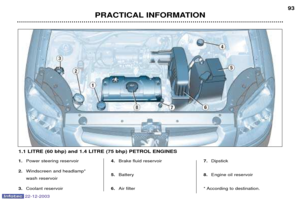 99
99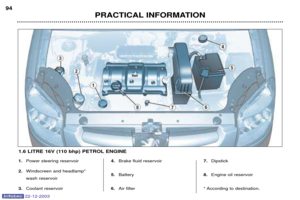 100
100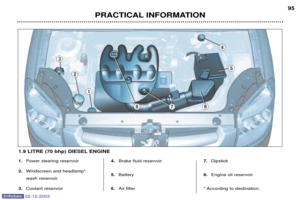 101
101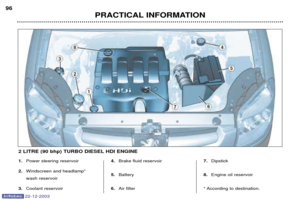 102
102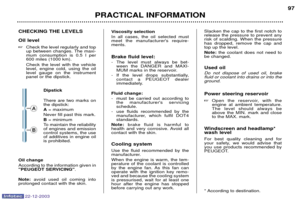 103
103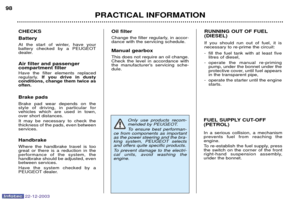 104
104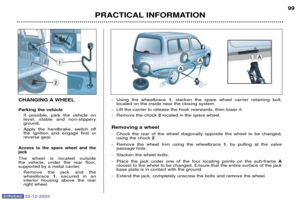 105
105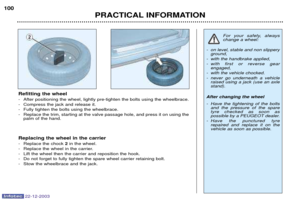 106
106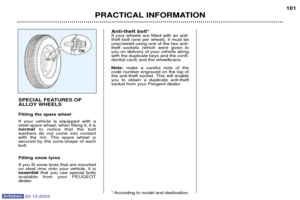 107
107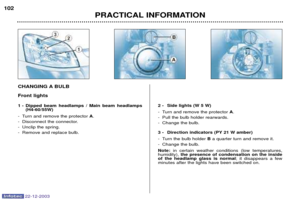 108
108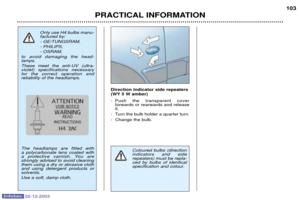 109
109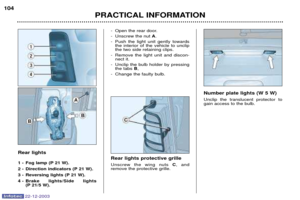 110
110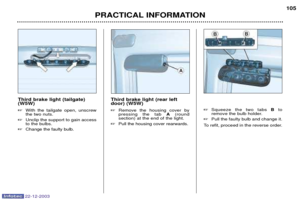 111
111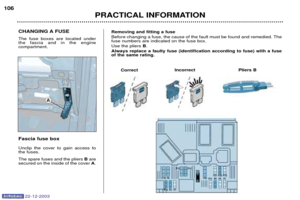 112
112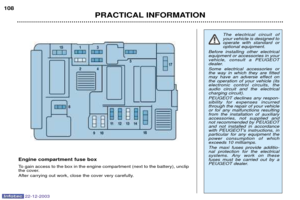 113
113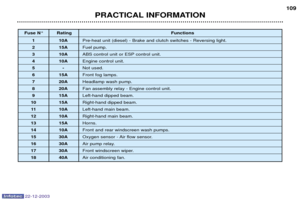 114
114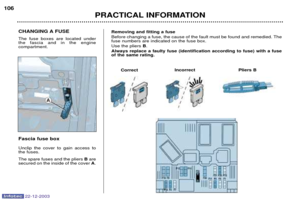 115
115 116
116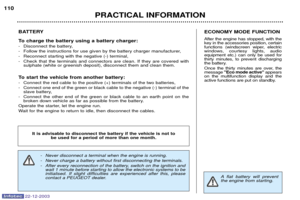 117
117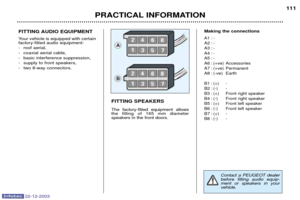 118
118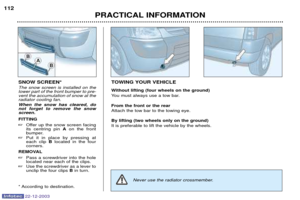 119
119 120
120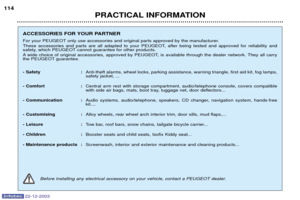 121
121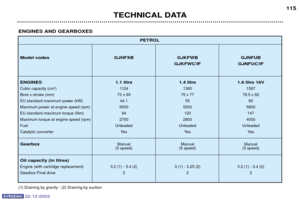 122
122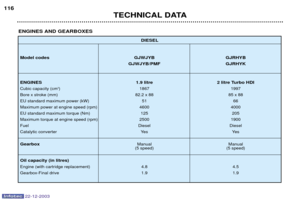 123
123 124
124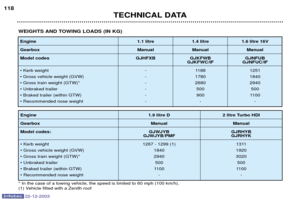 125
125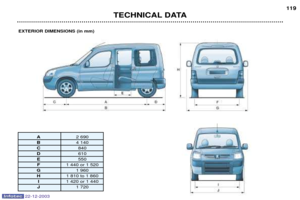 126
126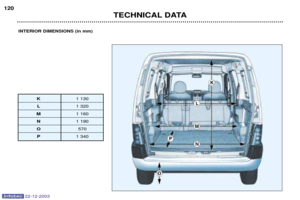 127
127

